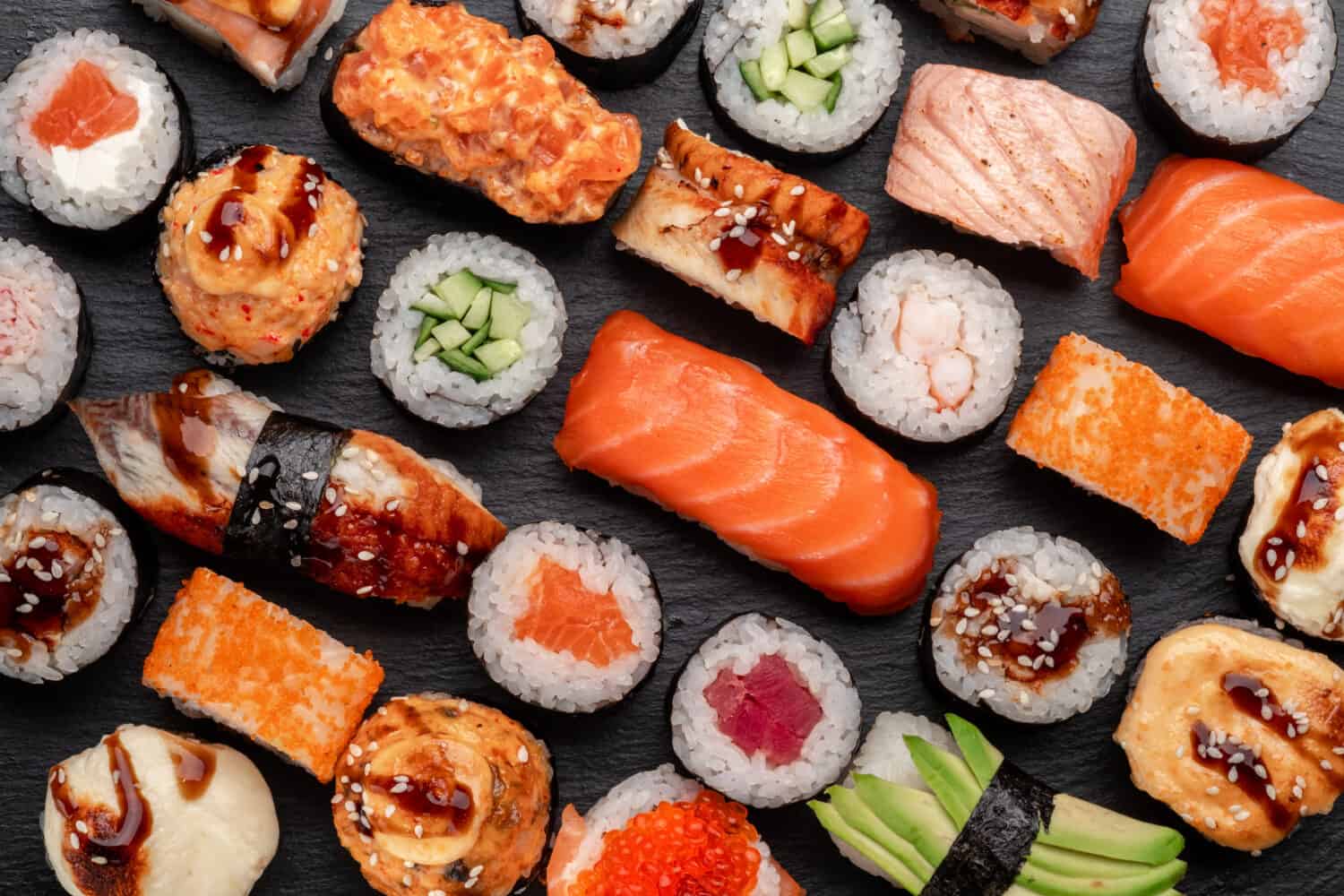If you're a fan of sushi, you're not alone. According to USA Today, sushi didn't become popular in the U.S. until after World War II. But these days, nearly five million Americans eat the dish at least once a month. And that's not a total surprise. Sushi has many essential health benefits since the fish in sushi contains a number of omega-3 fatty acids.
Sushi lovers are well aware of the differences between a hand roll and a cut roll. But there are more specific differences between the two kinds of rolls and variations within these categories that may surprise you.
The main difference between hand and cut rolls is that cut rolls are cut into bite-size pieces. Hand rolls, however, come in a longer cone shape that is “meant to be bitten into,” according to Hungry Huy.
But hand and cut rolls are only two variations of sushi. Let's dive into other differences in this popular dish.
Sushi Rolls (Makizushi or Maki Sushi)
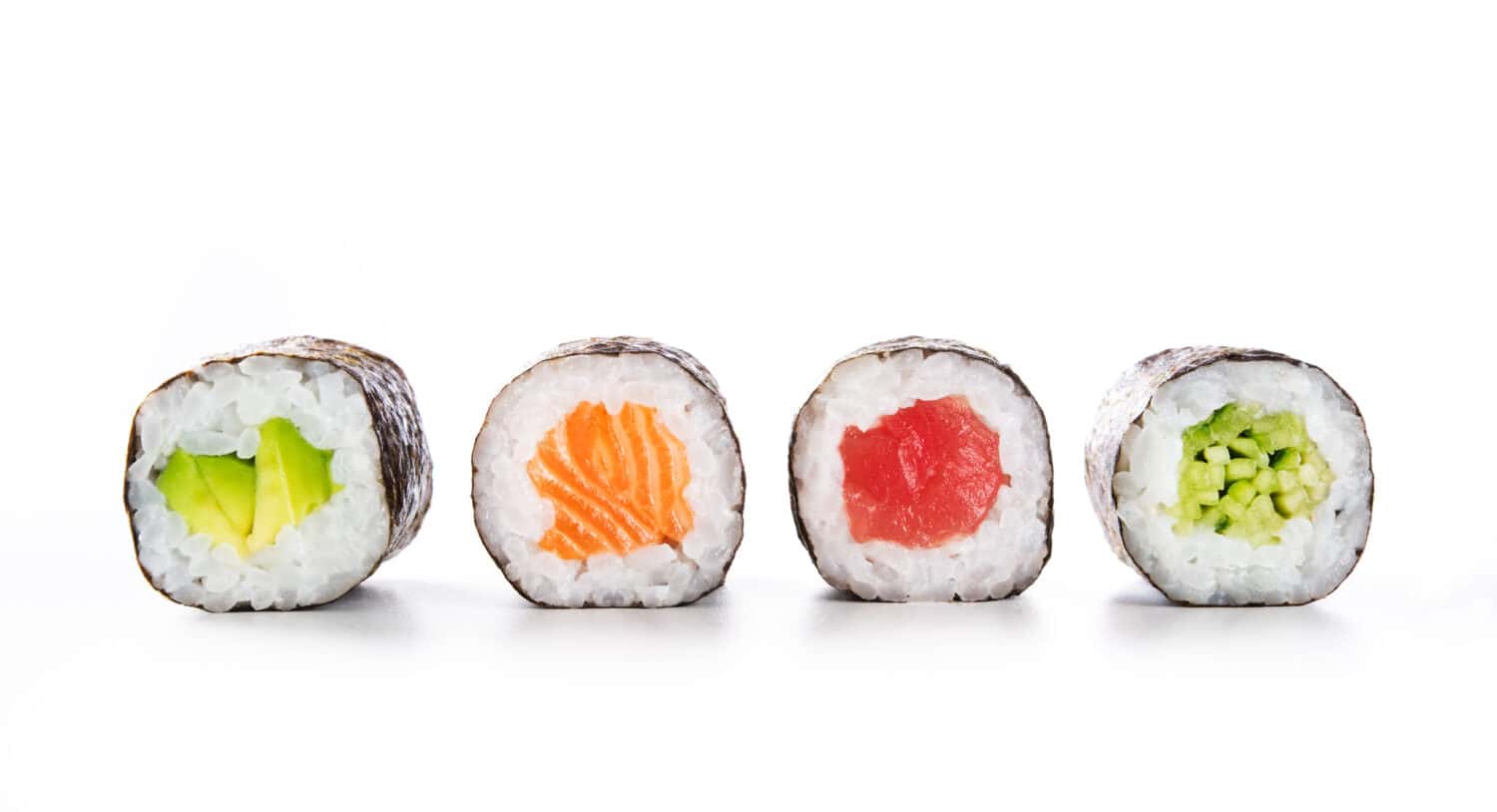
©Ground Picture/Shutterstock.com
Sushi rolls are the most popular kind of sushi. They are rice wrapped in seaweed and then rolled into a cylinder. This is when they are cut into (typically) six or eight serving-size pieces.
Within maki sushi, there are four other forms: Hosomaki, Chumaki, Futomaki, and Uramaki, according to Just One Cook Book. Hosomaki tends to have rice with just one ingredient– it could be salmon, tuna, or cucumber, for example.
Chumaki is a medium-sized roll that contains two to three ingredients. This could include a California roll, a Dragon roll, or a Spicy Tuna Roll.
Futomaki is much thicker. Futomaki typically contains more than two fillings. These are vegetarian and could include ingredients like pickled radish, bamboo shoots, ground strips, cucumber, and others.
Uramaki, or inside-out rolls, are also very popular. In this case, rice is on the outside, and nori is in the middle of the sushi. Kinds of uramaki include California roll, dragon roll, Spicy tuna roll, rainbow roll, and spider roll.
Temaki (hand roll sushi)
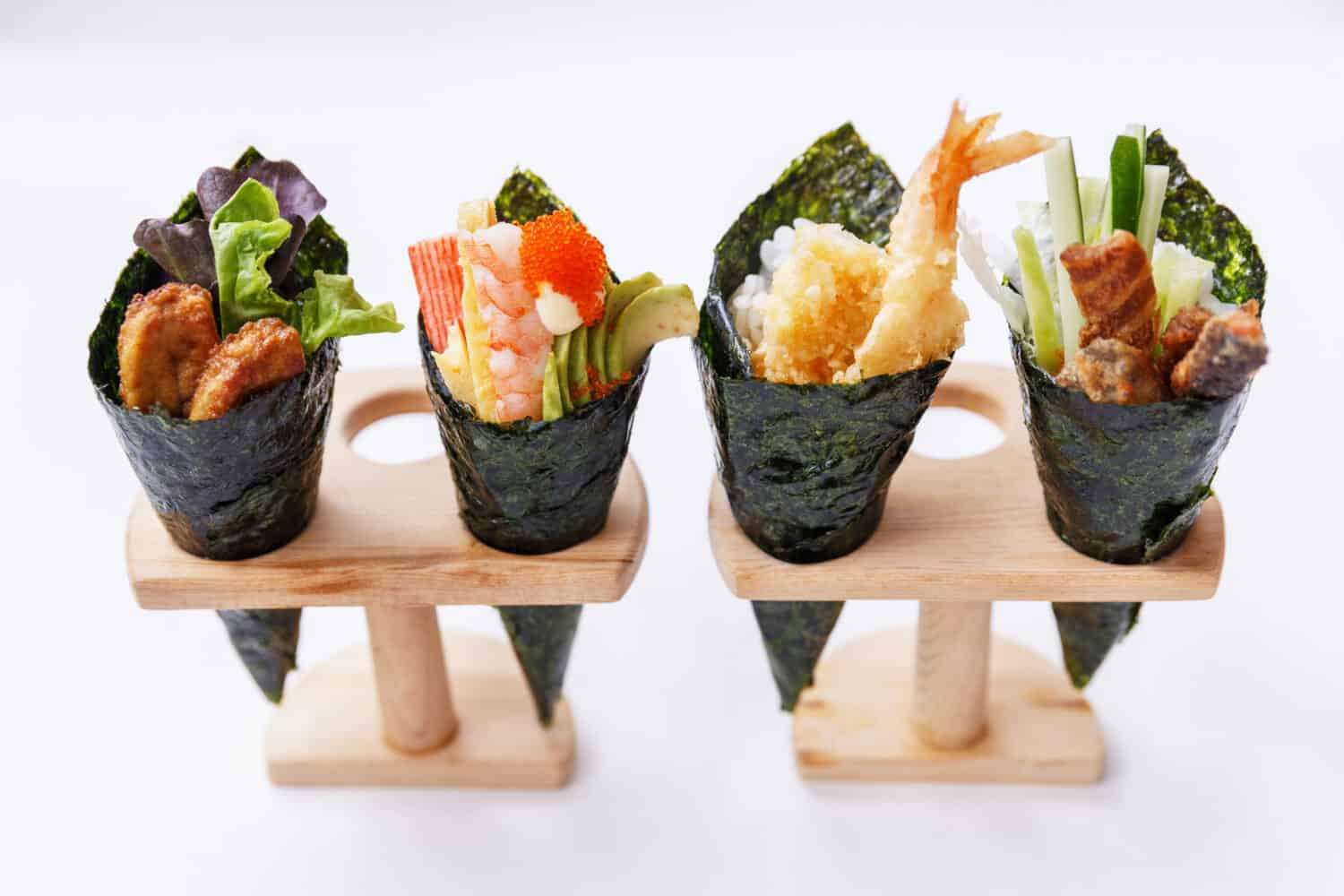
©Artit Wongpradu/Shutterstock.com
Temaki sushi is another way of saying hand-rolled sushi.
It involves wrapping nori seaweed around sushi rice and adding one or more fillings. No Recipes writes that Temaki, or hand-rolled sushi is a popular option for casual get-togethers since there are so many variations to explore in terms of fillings.
Temari Sushi (Ball-shaped)
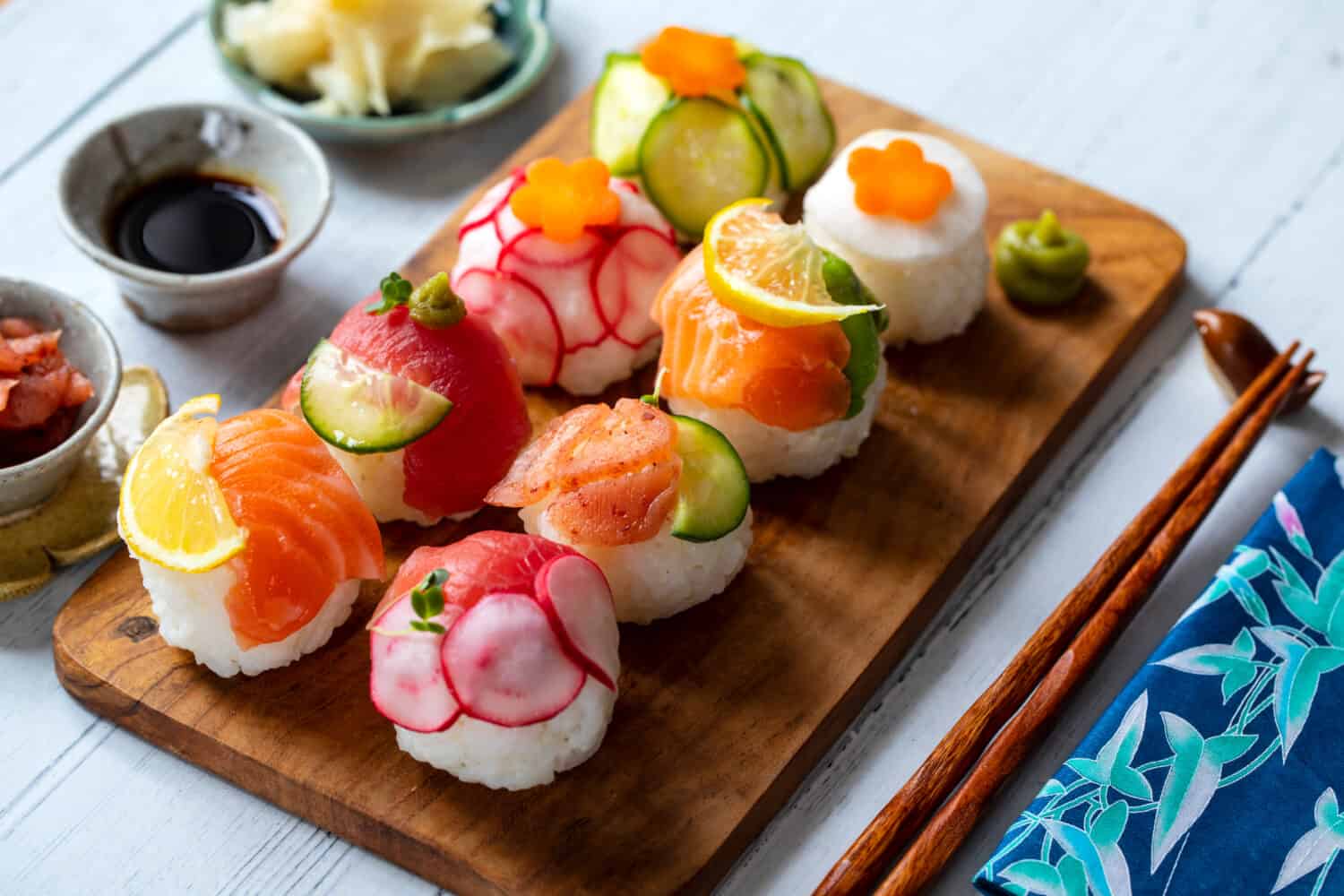
©Magdanatka/Shutterstock.com
According to Just One Cook Book, Temari sushi is ball-shaped. The outlet describes this sushi as “pretty” and “dainty.”
These round balls of sushi rice are often topped with things like vegetables, seaweed, and fish. Pickled Plum writes that no skill set is needed to arrange Temari.
Inari Sushi (Sushi Wrapped in Fried Tofu Pouch)

©Fotema/Shutterstock.com
Inari sushi is deep-fried. For those who are vegan and vegetarian, Inari is a great option. Chopstick Chronicles explains that these sushi balls are wrapped in “Aburaage” tofu.
Inari sushi comes from the Kansai region.
Other kinds of sushi range from Oshizushi, or pressed sushi, which is layered, to Nigirizushi, or bite-sized sushi. But one thing is for sure– no matter how you like to eat sushi, it is a unique and flavorful dish that can be paired with a number of drinks and other dishes.
Hand Roll and Cut Roll Sushi: Final Thoughts
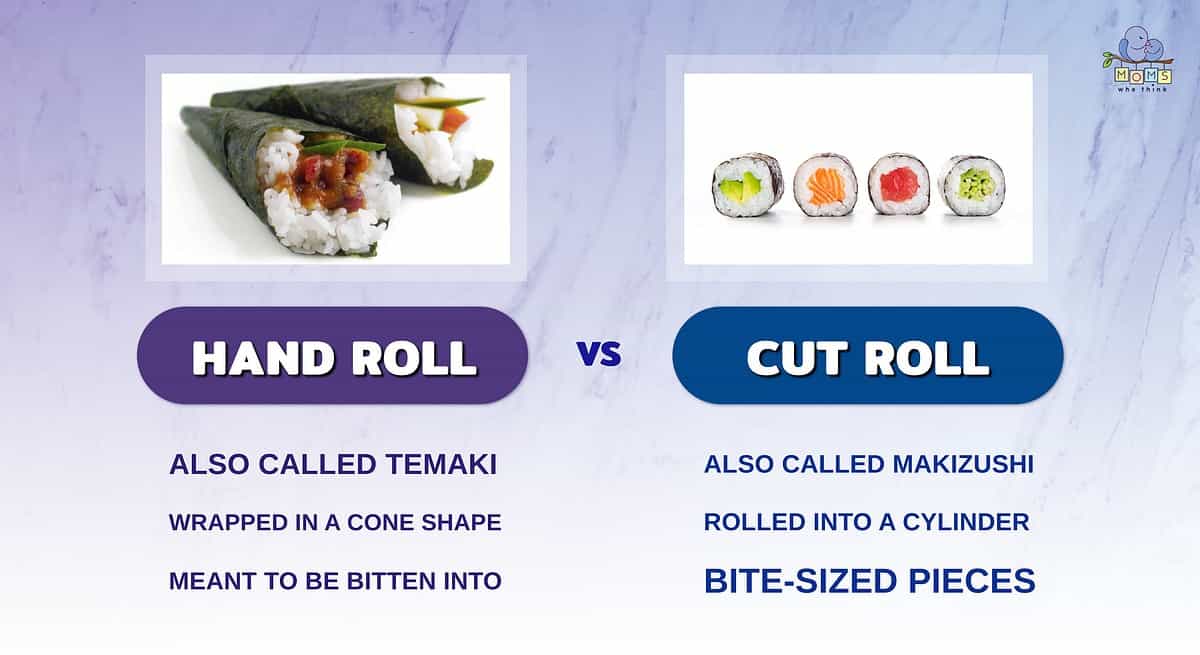
You can't go wrong with choosing either hand roll sushi or cut roll sushi. Both are delicious and have a variety of options. Here are a few of their differences to help you decide which one to have for dinner.
- Sushi rolls are typically more popular than hand roll sushi.
- There are four types of cut roll sushi: Hosomaki, Chumaki, Futomaki, and Uramaki.
- Roll sushi is rolled into a cylinder and cut into bite-sized pieces.
- Hand roll sushi is sushi rice with one or more ingredients wrapped in nori seaweed in a cone shape.
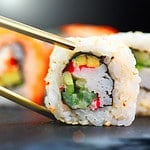
Cut Roll Sushi
Ingredients
For the Sushi Rice:
- 1 cup sushi rice
- 2 cups water
- 1/4 cup rice vinegar
- 2 tablespoons sugar
- 1 teaspoon salt
For the Sushi Filling (Choose one or more):
- Sushi-grade raw fish (such as tuna or salmon), thinly sliced
- Cooked and seasoned shrimp
- Avocado, thinly sliced
- Cucumber, thinly sliced into matchsticks
- Carrot, thinly sliced into matchsticks
- Cream cheese, thinly sliced (for a Philadelphia roll)
- Seaweed (Nori) sheets
- Soy sauce, pickled ginger, and wasabi for serving
Equipment:
- Bamboo sushi rolling mat (Makisu)
- Plastic wrap or a plastic food storage bag
Instructions
1. Prepare the Sushi Rice:
- Rinse the sushi rice under cold running water until the water runs clear.
- Combine the rinsed rice and water in a saucepan and bring to a boil. Reduce the heat to low, cover, and simmer for about 15-20 minutes, or until the rice is tender and the water is absorbed.
- In a small saucepan, heat the rice vinegar, sugar, and salt over low heat until the sugar and salt dissolve. Remove from heat.
- Transfer the cooked rice to a large bowl and while it's still hot, add the seasoned rice vinegar. Gently mix and fan the rice to cool it down while maintaining a glossy appearance. Cover with a damp cloth to keep it moist.
2. Prepare the Sushi Fillings:
- Slice your chosen fillings into thin strips or pieces, ensuring they are long enough to fit across the width of your seaweed sheets.
3. Assemble the Sushi:
- Lay a bamboo sushi rolling mat on a clean surface and cover it with plastic wrap or a plastic food storage bag to prevent sticking.
- Place a sheet of seaweed (Nori) on top of the plastic wrap with the rough side facing up.
4. Add Sushi Rice:
- Wet your hands with water to prevent the rice from sticking. Take a handful of sushi rice (about the size of a small apple) and spread it evenly over the seaweed, leaving about half an inch of seaweed on one edge.
5. Add Fillings:
- Place your chosen fillings on top of the rice, near the center of the seaweed sheet.
6. Roll the Sushi:
- Using the bamboo mat, carefully lift the edge of the seaweed closest to you and fold it over the fillings, tucking it tightly.
- Continue rolling away from you while applying gentle pressure to create a cylindrical sushi roll.
- Wet the exposed edge of the seaweed with a bit of water to seal the roll.
7. Slice and Serve:
- Use a sharp, wet knife to slice the sushi roll into bite-sized pieces. Dip the knife in water between cuts to prevent sticking.
- Serve your homemade sushi with soy sauce, pickled ginger, and wasabi.
The image featured at the top of this post is ©Andrei Iakhniuk/Shutterstock.com.
